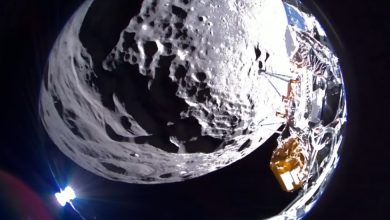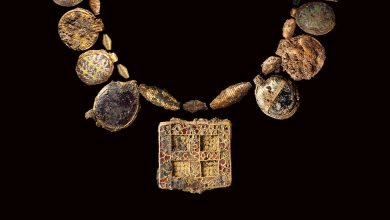A World Map With No National Borders and 1,642 Animals





Anton Thomas
In a hand-drawn map of the world, hundreds of animals sprawl across valleys and volcanoes, deltas and deserts.
In Australia, marsupials abound: A snarling Tasmanian devil stands before craggy Cradle Mountain, while a stubby brown wombat surveils the Great Australian Bight.
In the Cascade Mountains, on the West Coast of the United States, a cougar flexes its tail.
And deep in the North Atlantic Ocean, an anglerfish gapes into the gloom.
A World Map With No National Borders and 1,642 Animals
A self-taught artist-cartographer and outdoorsman spent three years on an obsessive labor of love with few parallels.

By Natasha Frost
Reporting from Melbourne, Australia
Dec. 10, 2023
In July 2020, his universe shrunk to a two-bedroom apartment by a rattling train line, Anton Thomas pulled out an H pencil and opened a portal to the world.
At once, his days of solitude were filled with New Zealand’s native birds; cavorting dolphins, turtles and whales; and polar bears on ice floes. Three years, approximately 2,602 working hours and 1,642 animal species later, “Wild World” is a hand-drawn map of our planet that both inspires and celebrates wonder.
Mr. Thomas, an exuberant New Zealander living in Melbourne, Australia, initially anticipated spending less than a year on the project. But as the months wore on and he sank deeper into the “opportunity to escape spiritually, and to not go mad,” he said, the scope of the task grew. It was sometimes a wrench to drag himself away at the end of the day.
A hiker and outdoorsman, Mr. Thomas as a child yearned for a world where nature ruled supreme. His map represents the “idealistic planet that I wanted,” Mr. Thomas, 34, said. “I would look out at Wellington Harbor,” in the New Zealand capital, “and see all the houses, and imagine what it was like before any humans showed up.”
To craft each creature with sufficient detail, he drew mostly under a magnifying glass, using sandpaper to sculpt his pencil ends to fastidious points.

Anton Thomas at his home studio in November.Credit…Abigail Varney for The New York Times
Almost as time-consuming was the research guiding his hand. Should a South Atlantic archipelago be written as the Falkland Islands or Las Malvinas? Did it matter that the thylacine, sometimes called the Tasmanian tiger, is probably extinct? Was a fighting bull Spain’s most iconic animal?
So Mr. Thomas set himself guidelines. Animals should be native to their location and neither domesticated nor extinct. The names of places would, where possible, be the ones preferred by their inhabitants. Human-made borders do not feature. (In practice, this meant both names appear; the thylacine does not; and a Cantabrian brown bear supplanted the toro.)
The map uses a Natural Earth projection, and its center runs through 11 degrees east of Greenwich Meridian, just past Oslo, in part to give New Zealand and Fiji a more harmonious placement.
Despite striving for “neutrality,” Mr. Thomas acknowledges that any inclusion or omission will spark debate. “Either way,” he said, “you’re having a conversation.”
Mr. Thomas spent his first years in Nelson, a small New Zealand port city. To him, its mountains and rivers were a paradise far eclipsing the fantasy settings of children’s books or video games.
The son of an artist, he has no formal training beyond drawing maps, some also illustrated with jaunty animal life, from his earliest boyhood. Then as now, he said, he understood cartography simply as representational drawing from a distance.
Illustrated maps like Mr. Thomas’s are powerful in part because they mimic how the human brain perceives the world, said John Roman, an artist-cartographer in Boston and the author of “The Art of Illustrated Maps.”
“We don’t see the latitude and longitude lines of maps,” he said. “We see the world, in our heads, through icons.”
For Mr. Thomas, this equates to a kind of “emotional geography,” where features with greater emotional heft — the New York City skyline, say, or the Golden Gate Bridge — may take up more space.
“There are animals the sizes of mountain ranges on my map,” he said. “But you know what? The African lion should tower over Kilimanjaro, if we’re drawing an emotional map.”
Almost as extraordinary as Mr. Thomas’s maps, said Tom Patterson, a retired cartographer for the National Park Service, is how he explains them. “His enthusiasm for his work just kind of bubbles out,” he said.
Mr. Thomas did not set out to become an artist-cartographer. After high school, he worked in the kitchen of a politics-themed pub in Wellington, while performing as a gigging musician.
At 21, dreaming of rock stardom, he departed his homeland for two years of “high jinks” in North America.
The music career did not progress. But the continent’s stunning topography “supercharged” his childhood passion for geography, he said, and he began compulsively doodling maps. “I would go to sleep, just thinking about the way the Sierras turned into the Cascades,” he recalled, “or how vast the Mississippi Basin was.”
Two years later, working as a chef in Montreal, Mr. Thomas was at a personal and professional crossroads. “I still hadn’t gone to university or made any plan for a career,” he said. “I was quite worried at the time, like, ‘What the hell am I going to do?’”
Mr. Thomas found his way out of the kitchen through a refrigerator.
A housemate had painted an old fridge white, and he asked Mr. Thomas to decorate its doors. For six weeks, he sketched the Americas, complete with cityscapes and forests (though no animals), attracting an audience of passing houseguests, who told him about their own travels as his fountain pen traveled from British Columbia down to the Chilean coastline.
“I loved it,” he said. “And the other thing I noticed was that everybody else loved it, too.”
Later, on moving to Australia, Mr. Thomas honed his skills as an illustrator and cartographer, eventually spending five years on a many-layered, full-color map of North America.
When the coronavirus struck, he was at the point of sending prints of that map to customers, and it was not until July 2020 that he could embark on “Wild World,” armed with a new easel and magnifying glass, and with an empty schedule stretching before him.
On July, 28, 2023, the pandemic long over, Mr. Thomas added the last touches to his map: six final creatures, including a golden-breasted songbird, a bat weighing less than half an ounce, and a bristly arachnid. In the staple-bound log book where he had chronicled his work, he concluded, in a ballpoint-pen scrawl: “FINISH WILD WORLD!!!”
Since then, he has been in “small business mode,” preparing to ship copies of “Wild World” worldwide. But cartography — and the open trail — beckon, and for his next project, he hopes to combine the two.
For Mr. Patterson, the former Park Service cartographer, Mr. Thomas’s work stands alone — done entirely by hand without digital backups or erase tools and with a level of detail that inspires the viewer to place their nose ever closer to the page.
Is any other mapmaker doing anything similar? Mr. Patterson paused momentarily. “No,” he said.





